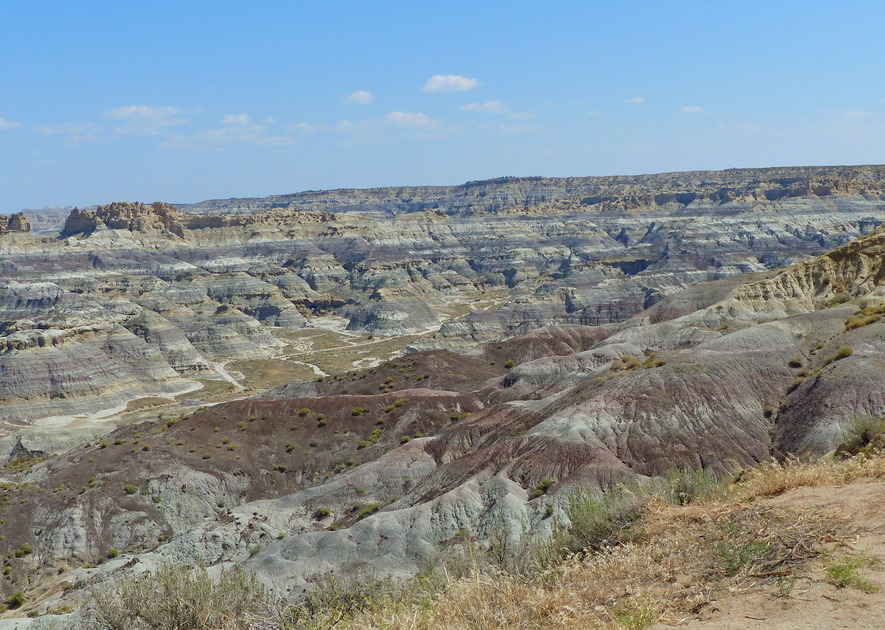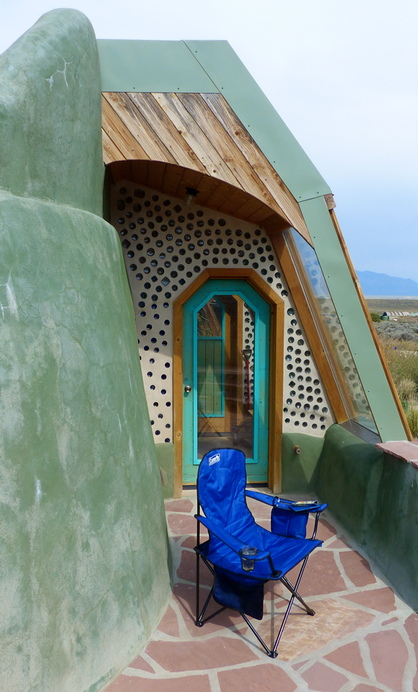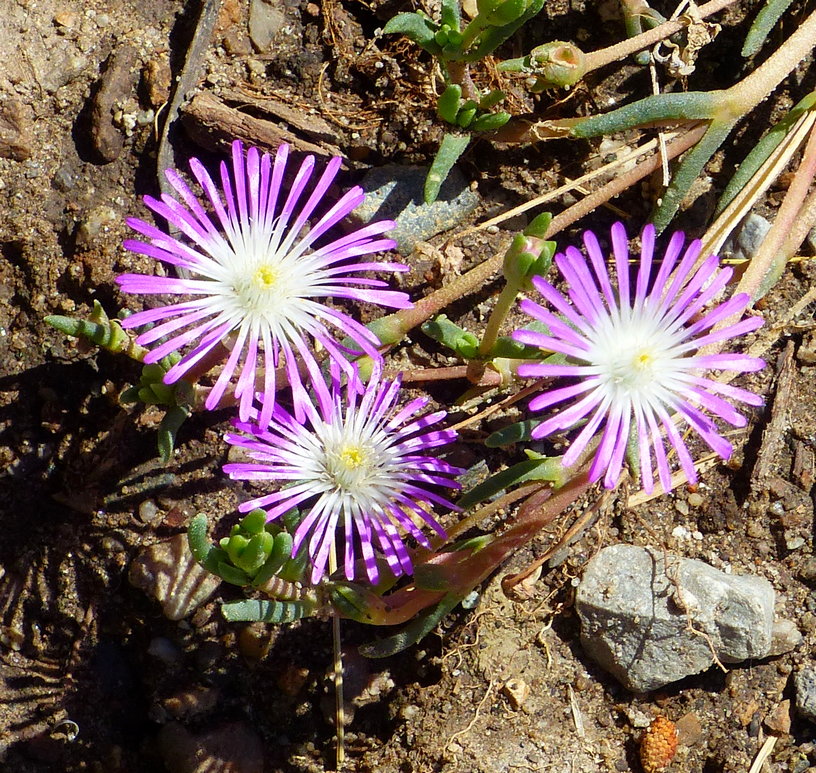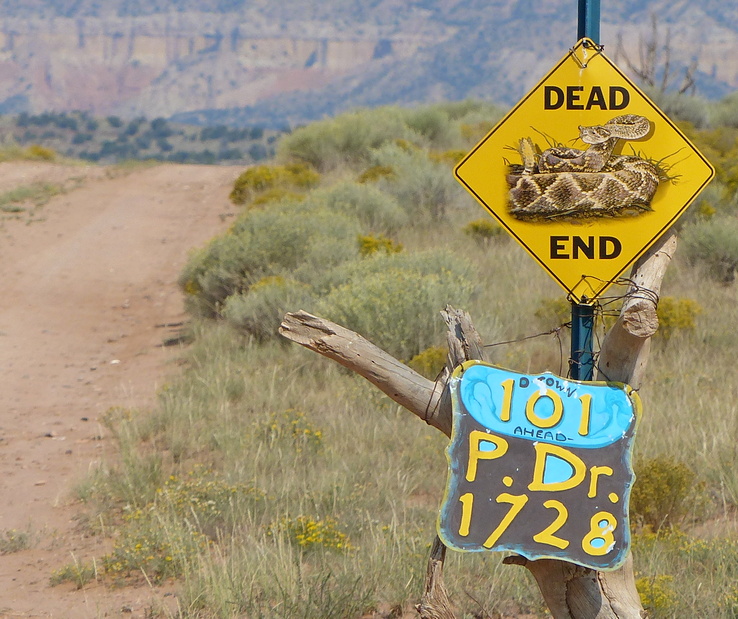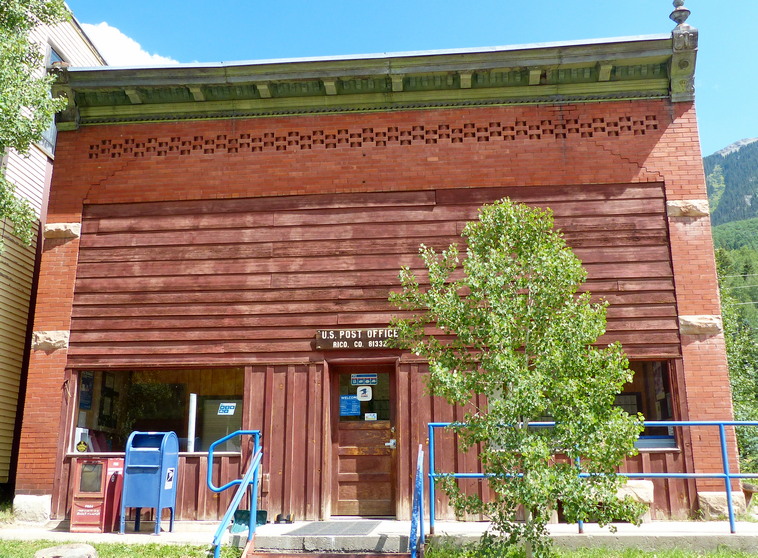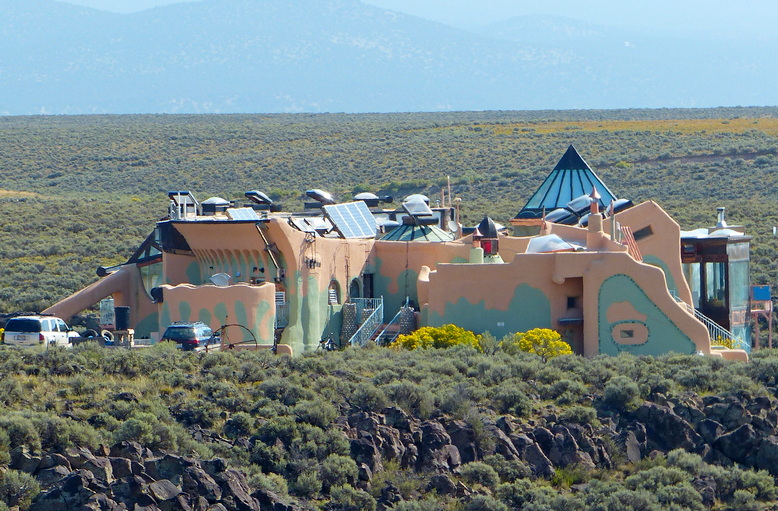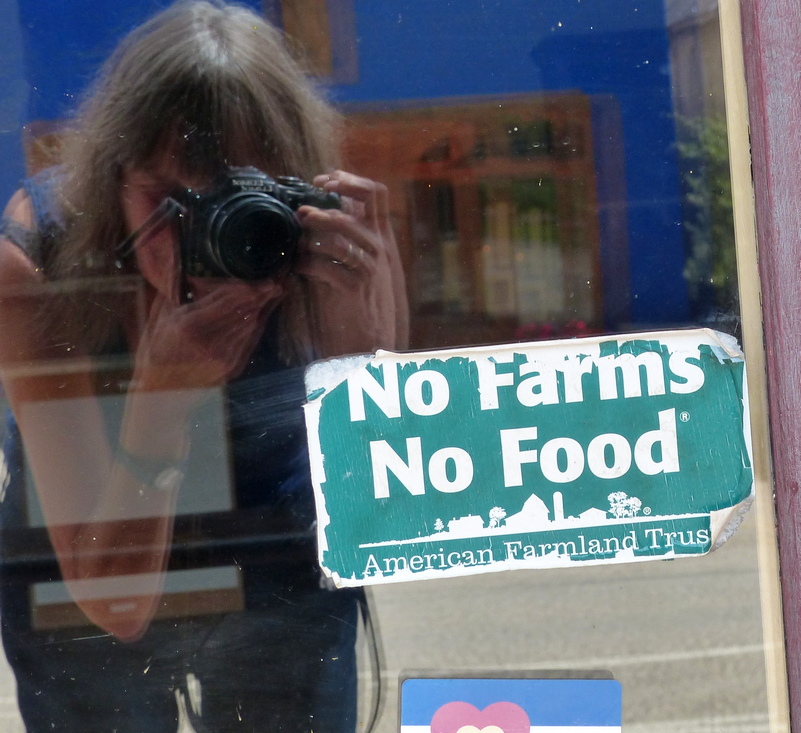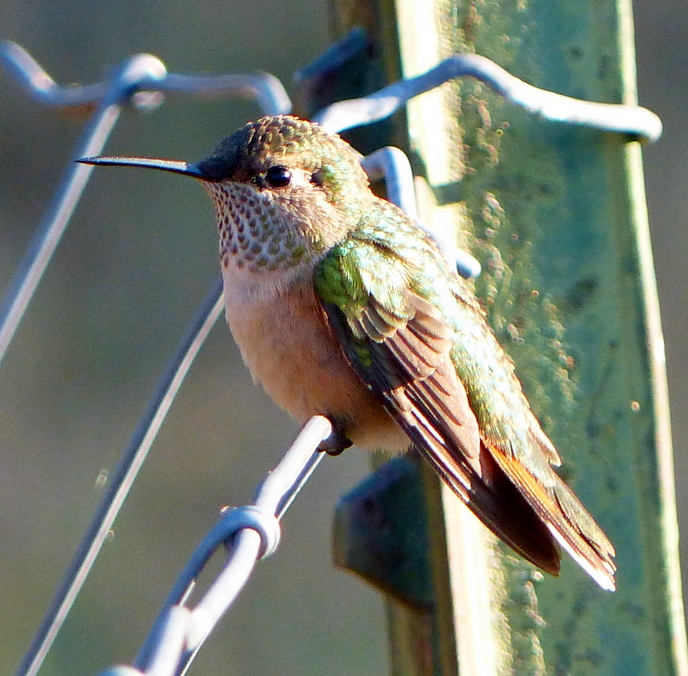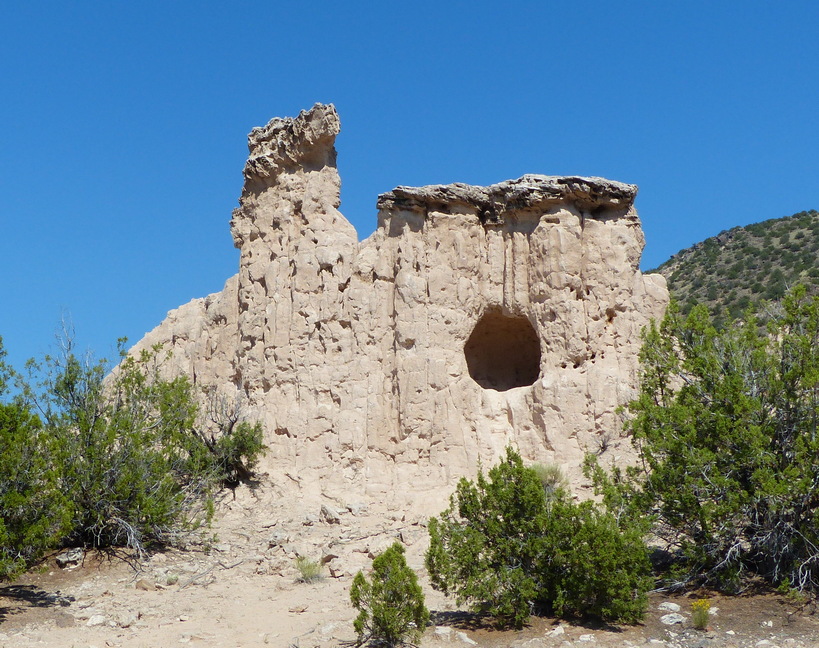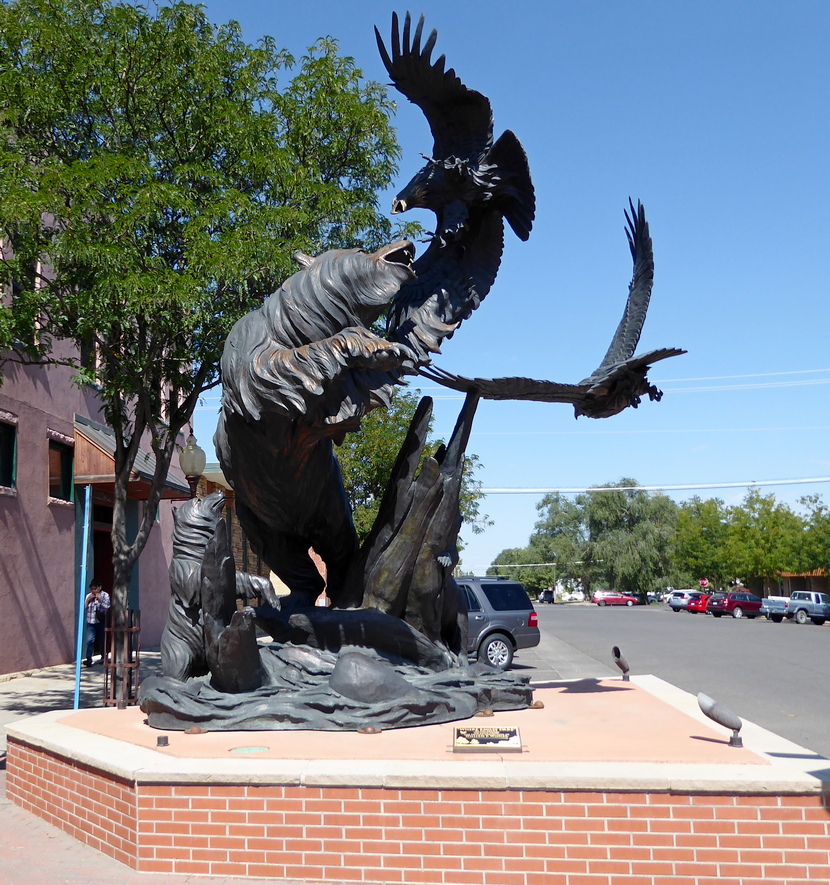In een slaapkamer in Chama, NM
California ground squirrel in Mancos, CO
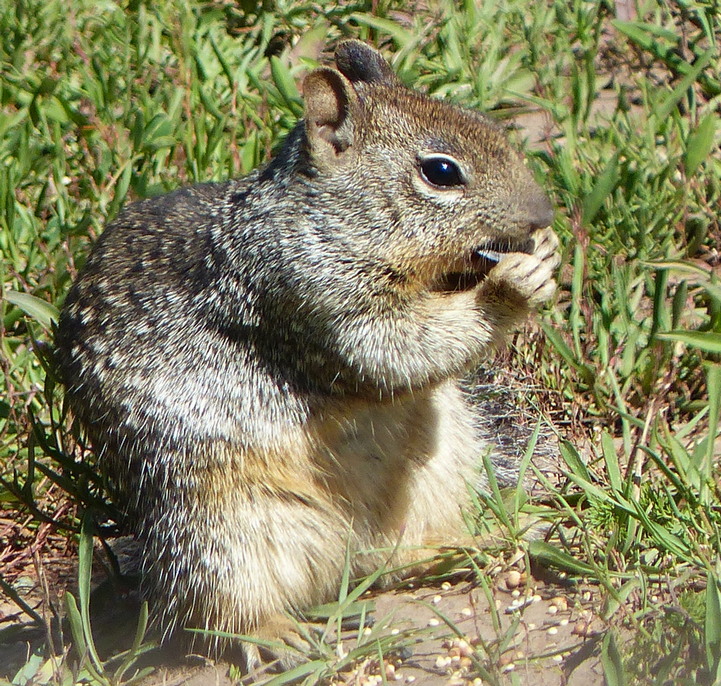
Uit Wikipedia:
California ground squirrels are frequently preyed on by rattlesnakes. They are also preyed on by eagles, raccoons, foxes, badgers, and weasels. Interdisciplinary research at the University of California, Davis, since the 1970s has shown that the squirrels use a variety of techniques to reduce rattlesnake predation.
Some populations of California ground squirrels have varying levels of resistance to rattlesnake venom as adults. Female squirrels with pups also chew on the skins shed by rattlesnakes and then lick themselves and their pups (who are never resistant to venom before one month of age) to disguise their scent.
Sand-kicking and other forms of harassment provoke the snake to rattle its tail, which allows a squirrel to assess the size and activity level (dependent on blood temperature) of the snake.
Another strategy is for a squirrel to super-heat and swish around its tail. When hunting, rattlesnakes primarily rely on their pit organ, which detects infra-red radiation. The hot-tail-swishing appears to convey the message “I am not a threat, but I am too big and swift-moving for it to be worth trying to hunt me.”
These two confrontational techniques also distract the snake from any nearby squirrel burrows containing pups.
Alarm
De eerste keer dacht ik dat een vogel hard zat te alarmeren, maar het bleek een eekhoorn te zijn.
Toen realiseerde ik me dat ik dat eerder had gehoord. Deze reis hoorde ik het eerst in Mancos en toen ook nog in Los Pecos.
Beide keren zág ik het ook. Op afstand. Ik schreef er al eerder over: hier.
Hier ongeveer in het midden op de foto, kale boom en dan in de top. (Even op de foto klikken anders zie je nog niets)
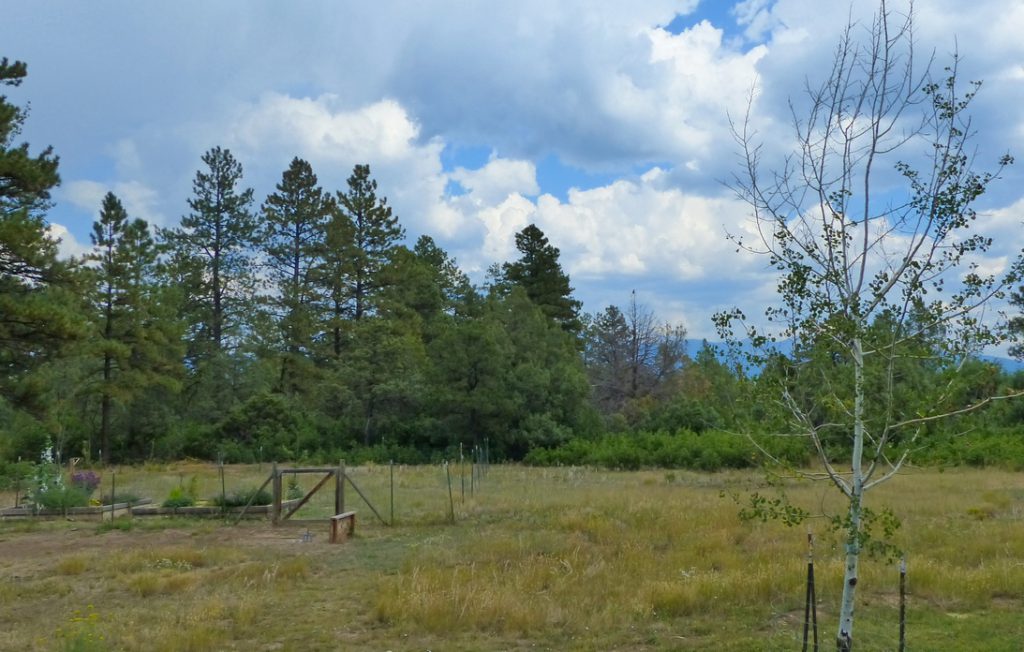
Ik probeerde dichterbij te komen voor een betere foto.
Wat alleen maar leidde tot meer paniek en meer alarmeren zodat ik snel weer terugliep.
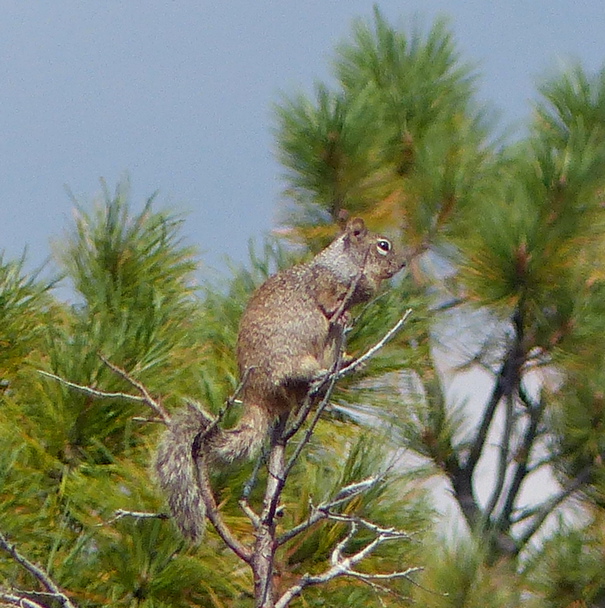
Dus vanaf grote afstand: de alarmroep.
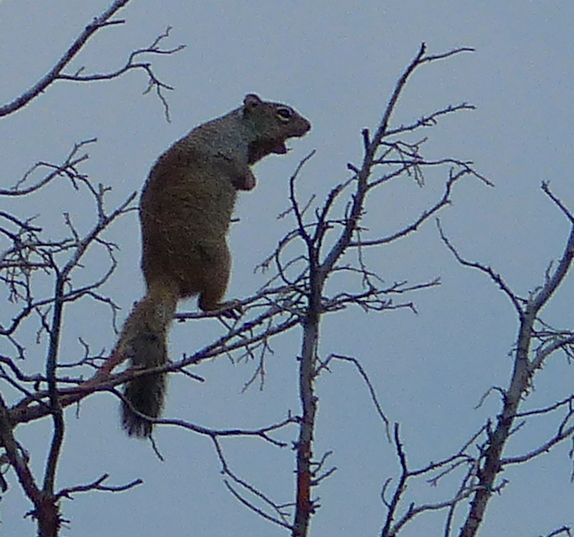
Farmington, NM
Badlands in New Mexico
In een winkel in Santa Fe, NM
‘Rups’ in Farmington, NM
Zodra ik in Farmington uit mijn auto stap, zie ik deze rups.
Daarna zie ik er nog veel meer, overal waar ik kijk. Ik doe mijn best er niet op te trappen maar er zijn er zó veel dat het niet te vermijden blijkt.
Na een dag zijn ze ook binnen, hoewel ik mijn best doe de buitendeuren dicht te houden.
Ik dénk dus eerst dat het een rups is, maar iem die er meer verstand van heeft gaat fanatiek voor me googlen en ontdekt dat het gaat om een Fall Webworm.

Dat *is* wel een rups in die zin dat zijn laatste fase die van een mot is, maar hij is het meest actief als ‘worm’ die bomen inkapselt en letterlijk opvreet.
Denk je nou, dáár wil ik meer van weten – lees hier (klik) verder.



